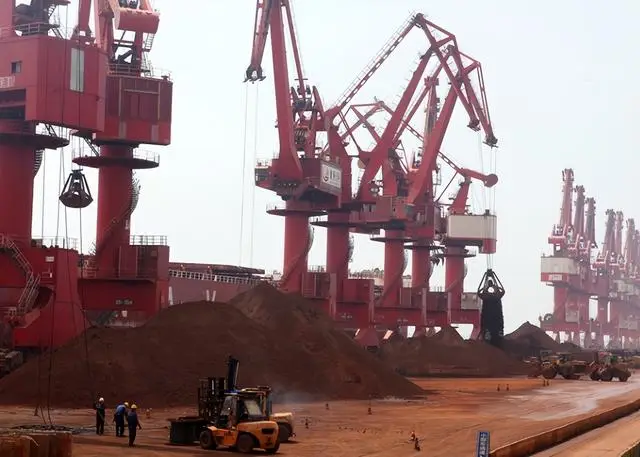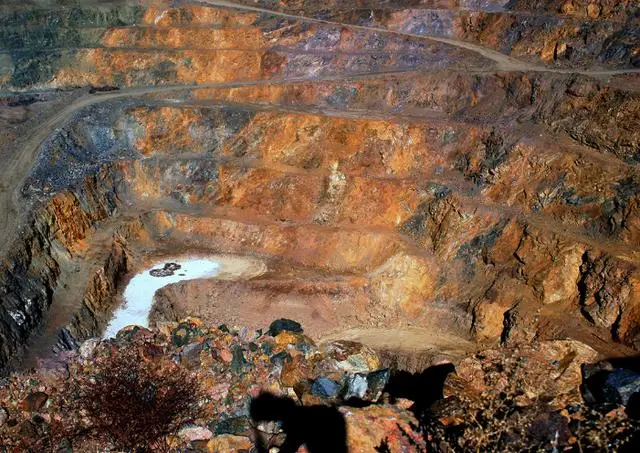It's Chinese rare earths again, and the Pentagon's "counterattack" plan again. America's "mineral panic" has recently struck again, and the announcement of the $1 billion purchase plan is like a frantic "mineral hunt." The truth behind this is actually simple: China's restrictive rare earth export controls are pushing the United States closer, and this growing panic has triggered an all-out counterattack from the Pentagon.

This isn't the first time. Over the past few years, the United States has been constantly calling for a Chinese "monopoly" in the rare earth sector. From smartphones to fighter jets, China controls nearly all the rare earth resources needed for various technological devices, and its control is steadily increasing. All of this seemed like a ticking time bomb, dormant for years, finally accelerating at some point this year. China's export control announcement nearly forced the rare earth supply chains of the United States and Europe into a dead end.
The Pentagon panicked. To break free from its so-called "rare earth dependency," it launched a counterattack—a $1 billion procurement plan was put on the table. This money would be spent clearly, purchasing various minerals, including cobalt, antimony, tantalum, and scandium. These minerals are crucial to US defense manufacturing, operating nearly every high-end technology, including radar and missile detection. Therefore, it's not an exaggeration to call them "strategic resources."
However, the Pentagon's "food first" approach seems a bit last-minute. If national security were truly so critical, why hadn't the United States proactively stockpiled these minerals for years, instead of waiting until China intervened to replenish its inventory? The Pentagon's $1 billion procurement plan instead seems a bit like a desperate move, forced into a corner. After all, the more urgently the money is invested, the more obvious the pressure behind it becomes.

To put it bluntly, the Pentagon's urgent purchases reflect a supply-demand imbalance and growing anxiety about China's control of the rare earth market. The US defense department is frantically seeking alternative sources of supply because it understands that if China cuts off the supply of these critical minerals, America's high-end weapon systems could be crippled.
Whether it's germanium, cobalt, or rare earth metals, they are the "heart" of high-end weapons, satellites, missiles, and other equipment. In today's global supply chain, China's rare earth export controls are like a ticking time bomb for the United States, especially after China rapidly tightened its rare earth controls. Soaring prices and tight supply pose a threat to the United States, not only of rising costs but also of a potential food shortage at a critical moment.
Some analysts point out that the Pentagon's move was foreshadowed. After all, the Pentagon is stepping up efforts to break free from its over-reliance on China for rare earths and find new sources of mineral supply. The United States' domestic production and import capacity for these minerals, including cobalt and antimony, is far from sufficient, necessitating an urgent need to increase reserves. While major US mineral demand sources, including Mexico and Australia, are partners, whether they can fill the void left by China in the short term remains a significant question mark.
However, the real irony is that behind the Pentagon's "counterattack," isn't there a deeper game than a "resource war"? Just look at these so-called mineral procurement targets—the volumes are truly staggering. For example, the amount of antimony the US plans to purchase exceeds its total consumption in 2024. This figure alone should shock market participants. Is the Pentagon desperate to fill the gap, or is this a clever ploy to "create pressure" on the market?

The US's frenzied pursuit of minerals is more a cover-up for technological bottlenecks than an attempt to "break China's rare earth monopoly." After all, the yawning gap between demand for certain sensitive minerals and US domestic production capacity has exposed the awkward situation of the US increasing mining while desperately searching for alternative resources. Conversely, the US government's increasing reliance on domestic and foreign mineral purchases reveals its dependence on China in the high-tech supply chain.
Perhaps most importantly, behind this "panic" lies the US's realignment of its global strategic resources. This $1 billion "mineral order" may appear to be just one part of the US defense plan, but it reveals a deeper problem than simple purchases. Whether the US can truly establish a more independent and secure global rare earth supply chain remains a significant challenge.
In short, while the Pentagon's "$1 billion plan" may appear far-sighted, it is actually a somewhat helpless response to China's rare earth monopoly. The US mineral stockpiling plan may appear to be a strategic move on the surface, but at a deeper level, it exposes the US's anxiety and dependence on the global resource supply chain. China's rare earth export controls at this time precisely demonstrate its dominant position in the global supply chain.




